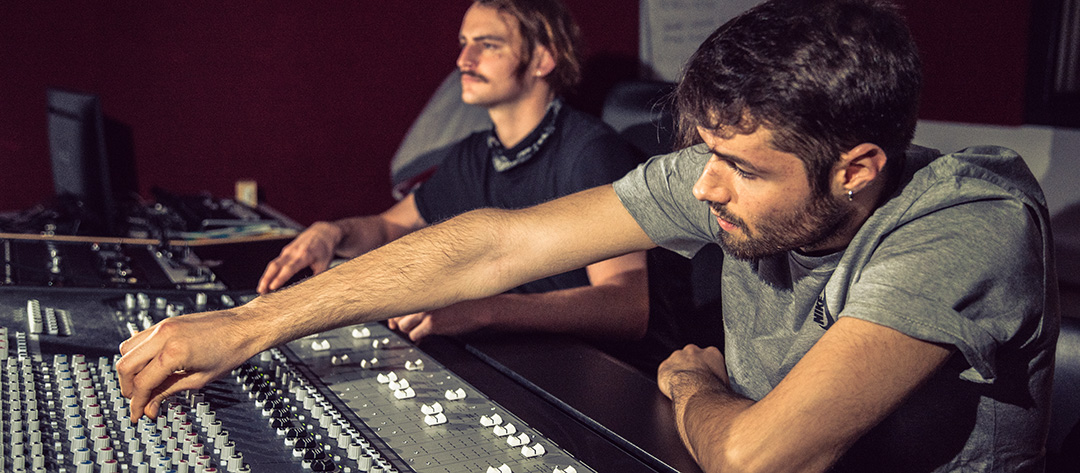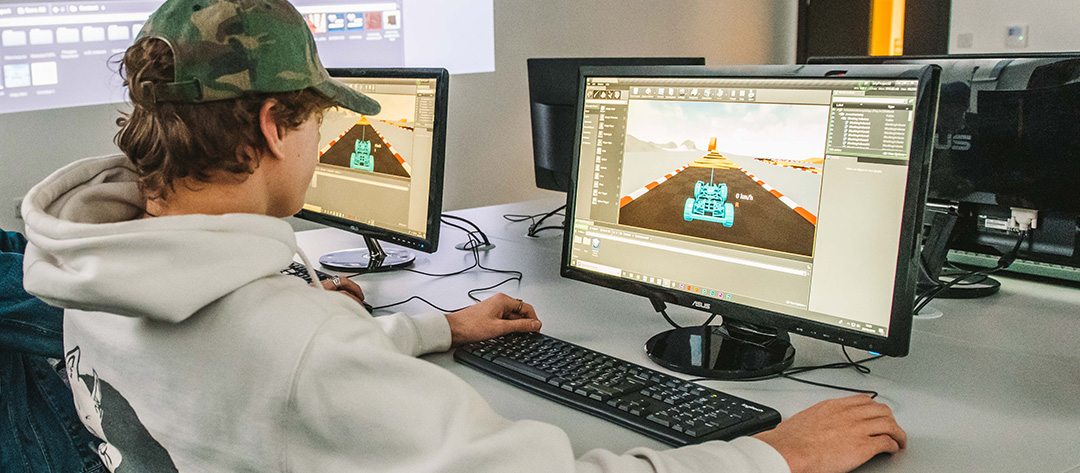This week, we’re continuing our ‘How To’ series, giving you our best advice on setting yourself up for industry.
In this edition, we’re looking at how to build a professional portfolio, dressed to impress. Check out our tips below!
![]()
![]()
![]()
![]()
![]()
![]()
![]()
![]()
What is a Portfolio?
A portfolio is a summary of all of your best work, in a collection that demonstrates your abilities and processes as a creative professional. Portfolios can also showcase experience, awards, previous education, qualifications and more! Think of a portfolio as a time capsule you’re burying for aliens (ones who seem strangely interested in your career). You should aim to provide as much work and information that shows off your professional capabilities as you can. It’s important to note that a portfolio does not replace a CV / resume, but acts as an addition to your CV.
![]()
![]()
![]()
![]()
![]()
![]()
![]()
![]()
What are the Benefits of a Portfolio?
A portfolio is a really useful tool to have, as you can easily update it and showcase your work at any time. They can be used to apply for a myriad of different opportunities including jobs, placements and internships, universities, colleges and more! Portfolios can also back up points you make when trying to sell yourself. It’s all well and good to tell a future employer that you are brilliant with Adobe Illustrator, but without the evidence to back it up you could give a bad first impression. Portfolios can also set you apart from the crowd and give you that extra edge over other applicants.
![]()
![]()
![]()
![]()
![]()
![]()
![]()
![]()
How do I begin?
I’m sure you all know the importance of saving your work, whether that be a slideshow, a C++ script or a demo you’ve just recorded. Saving and backing up work not only means you can edit it or upload it at a later date, it means you can use it in a portfolio. The best portfolios include a wide range of work across different mediums and styles, that show a person’s creative development. Because you saved all of your work and backed it up appropriately, you can now pick and choose which pieces you would like to feature from a bigger collection. Again, variety is key here – no employer wants to see an entire portfolio of black and white portrait photography.
Now that we have our work collated, we need to make sure we cover the other aspects of a portfolio. Most notably: a CV, references and a statement of originality. There are other components such as a personal statement, a work philosophy and if applicable a plan for academic studies but these are not as vital as the 3 listed prior. A CV or Curriculum Vitae summarises all of your skills, work experience and education in a concise manner. Having a CV is essential for applying to the majority of jobs, as are references which are there to speak to your character as an employee and person. Having a mix of both professional and character references is important, so a potential employer gets a good idea of how you perform at work and what kind of person you are. The statement of originality is to set out that all work included is your own and hasn’t just been nabbed from someone else’s website.
If you’re worried about your work being shared by employers, you can specify if certain parts of the portfolio cannot be copied or shared beyond those who view it.
![]()
![]()
![]()
![]()
![]()
![]()
![]()
![]()
How do I put one together?
Now that you have all of these key components you can begin putting your portfolio together. Hurrah! In terms of actually setting out and displaying your work you can do this in a variety of different ways.
You could use something as simple as a slideshow, build your own website using html or use a template on Google Sites. Think about tailoring the presentation of your portfolio to your field of work. If you’re involved with games, maybe you could build out a Skyrim style intro sequence for the portfolio. As obvious as it sounds, don’t be afraid to get creative with it! Anything to make you stand out from the masses is going to earn you favour with whoever you’re trying to impress. Just make sure the format you choose can be shared easily; uploading a 10gb file to an email each time you need to share your portfolio may start to become quite tiresome.
![]()
![]()
![]()
![]()
![]()
![]()
![]()
![]()
Specialising your Portfolio
Whilst the bones of your portfolio are going to be very similar to your peers, it’s important that you specialise it in some way. Whether this is to the industry, institution or company you are applying to, or to you as a person. For example, at Access we have a wide range of courses, so a music student’s portfolio should not look identical to that of an esports student’s. Here are a few ways in which you can tailor your portfolio to your area of interest:

Music
- Showing use of technical skills eg. Ableton
- Positive reviews of your music from local publications
- A mix of both demos and published music


Media
- Using a visual medium to display work eg. Showreel
- Showing pre-production alongside outcomes
- Demonstrating versatility through different styles

Games
- Including at least 1 example of a team project
- Demonstrating foolproof navigation through your UI
- Showing demo videos of finished projects


Computing
- Ensuing any included code is clean
- Choosing a strong domain name
- Making finished product visually engaging


Esports
- Including experimental work
- Selling your personality and brand
- Showcasing a range of different games and skills
![]()
![]()
![]()
![]()
![]()
![]()
![]()
![]()
What’s Next?
Now that you have all the information required to build a portfolio – it’s time to get cracking!
Start by collating all of the work you are most proud of; selecting pieces that show a wide range of skills and styles. Then, you can begin to specialise your portfolio to your area of expertise through visual presentation, annotation and feedback from peers.
Once you’ve finished, consider showing your portfolio to friends and family for feedback, or test it by applying for different opportunities. Make edits to your portfolio based on feedback from friends, family and potential employers until you’re happy with it and then spread it far and wide to show off what you can do and build your dream career.
![]()
![]()
![]()
![]()
![]()
![]()
![]()
![]()
If you’d like help to build your portfolio, as well as the opportunity to add to it, Access Creative College is the place for you. Our bespoke career service, Professional Development, is designed from the ground up to offer you practical advice and portfolio boosting opportunities that set you up for success. Find out more about Professional Development here.